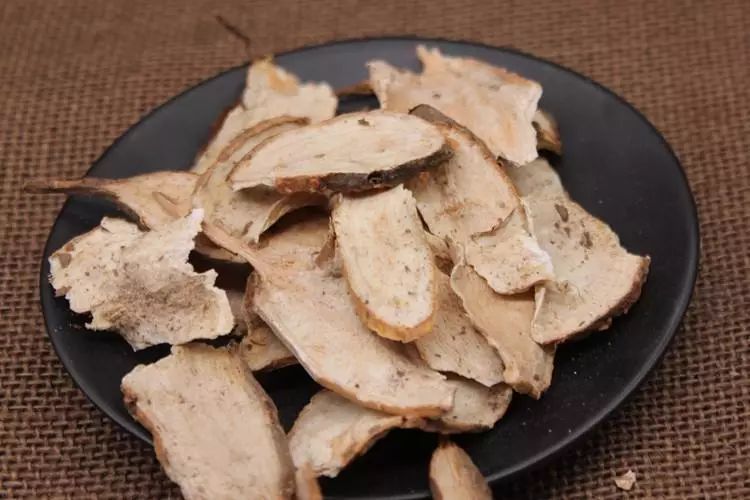Japanese Ampelopsis Root

What is Japanese Ampelopsis Root?
Japanese Ampelopsis Root (bai lian, 白蔹), also known as the Japanese Peppervine Root or Radix Ampelopsis, is the dried root of Ampelopsis Japonica. This woody and ornamental vine is native to Asia and North America. This plant grows at an extremely quick rate and it can reach a height of more than 15 feet at times.
Japanese Ampelopsis resembles a grape vine, where it has dark green leaves, tiny flowers and curved tendrils. Japanese Ampelopsis Root grows berries of various colours, mostly dark-blue, and its flowers bloom in mid to late Summer. Its seeds ripen in the fall and the plant withers afterwards, which is when the roots will be dug up, cleaned and dried for medicinal usage.
In Traditional Chinese Medicine (TCM), Japanese Ampelopsis Root is cool in nature. This means that it can help individuals who have too much Heat, such as those experiencing a Yang Excess or a Yin Deficiency, to restore a healthy yin-yang balance. Bitter and pungent in taste, this herb can cleanse the body by clearing Heat, drying Dampness and promoting elimination via urination or bowel movements. Also, the herb can promote the circulation of qi and body fluids. In particular, Japanese Ampelopsis Root targets the Heart, Liver and stomach.
Functions and Benefits of Japanese Ampelopsis Root (Bai Lian)
Traditional Chinese Medicine (TCM) shows that Japanese Ampelopsis Root has the following health benefits.
Japanese Ampelopsis Root can clear Heat and eliminate toxins from the body. It can thus be used for conditions where Heat and toxins have caused sores and abscesses. The herb can reduce swelling, treat carbuncles and burns topically, dissipate nodulation and reduce skin redness and lesions. It is also very effective in healing ulcers that are slow in recovery.
Other symptoms that Japanese Ampelopsis Root can treat include Scrofula, Warm malarial disorders, Intestinal Wind, bleeding hemorrhoids, pink eyes, children’s fright seizures and painful swelling in the vagina.
Also, Japanese Ampelopsis Root can promote tissue regeneration to heal sores and wounds. The herb can activate the sinews to promote blood circulation and activate the small Intestine to promote urination as well.
Due to its above benefits, Japanese Ampelopsis Root is also often used for wound healing after corrective surgery for cleft lip and palate.
Modern studies have also shown that Japanese Ampelopsis Root may be able to inhibit the growth of cancer cells. Other benefits of the herb include addressing vomiting and relieving pain in the waist, feet, arms and legs.

How to Use Japanese Ampelopsis Root
The recommended dosage of Japanese Ampelopsis Root is 4.5 – 9g, when used as a decoction or pounded powder for topical washing, application or consumption.
Dried Japanese Ampelopsis Root can be found at some Asian markets and specialty stores. Certain herbal stores also offer Japanese Ampelopsis Root in the forms of powder, extracts and poultices.
Tip: For hot water burns, mix Japanese Ampelopsis Root powder with a small amount of water to make a paste and apply it to the burnt area. This method of application helps to leave fewer scars.
Cautions and Side Effects of Japanese Ampelopsis Root
Japanese Ampelopsis Root should not be used for patients who are experiencing too much Cold, especially for those who have too much Cold in their Spleen and stomach. Individuals who have yin-type ulcers as well as poor digestive functions should also stay away from Japanese Ampelopsis Root for the time being.
Also, Japanese Ampelopsis Root is incompatible with most versions of Aconite. Thus, patients who are consuming Japanese Ampelopsis Root or Aconite should not consume the other herb at the same time.
Summary
Here is a summary for Japanese Ampelopsis Root:
- Herb name (Chinese): 白蔹
- Herb name (Pin Yin): bái liǎn
- Herb name (English): Japanese Ampelopsis Root
- Herb name (Botanical): Radix Ampelopsis
- Origin of species: Ampelopsis japonica (Thunb.) Makino
- Part(s) of herb used: Root Tuber
- Geo-specific habitat(s): Northern and eastern parts of China, Southern provinces including Guangxi and Guangdong
- Taste(s) & Properties: Bitter, pungent; Slightly cold; Administrates the Heart and Stomach meridians
- Actions: Relieves heat and toxins, and reduce swelling relating to inflammatory
conditions; Often used to help in recovery for very dry or scalded skin, swollen sores or carbuncles.
References
Chen, Y. L., Zhang, Y. L., Dai, Y. C., & Tang, Z. P. (2018). Systems pharmacology approach reveals the antiinflammatory effects of Ampelopsis grossedentata on dextran sodium sulfate-induced colitis. World Journal of Gastroenterology, 24(13), 1398. [Accessed on 7th November 2022]
Lee, C. L., Jhan, Y. L., Chiang, H. M., Chen, Y. H., Chen, C. J., & Chang, Y. S. (2022). Characterization of chemical constituents with their antioxidant and anti-melanogenesis activities from the roots of Ampelopsis japonica. Natural Product Research, 36(12), 3133-3137.[Accessed on 7th November 2022]
Mei, S. X., Li, X. H., Yang, L. G., Li, X. H., Xie, J. Y., Yao, Q., … & Zhu, Z. Y. (2017). Chemical constituents from the roots of Ampelopsis delavayana and their antibacterial activities. Natural Product Research, 31(2), 190-195.[Accessed on 7th November 2022]
赵翠兰, 郭桂森, 李开源, 肖庆慈, & 毛小平. (1996). 白蔹部分药理作用实验研究. 云南中医中药杂志, 17(3), 55-58.[Accessed on 7th November 2022]
Share this article on
